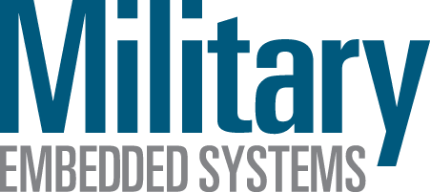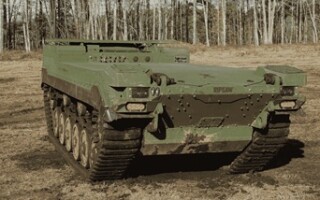Ushering in a new generation of Internet Protocol (IP)-based communications has been a primary goal for the U.S. Department of Defense (DoD). Since the end of 2021, the DoD has been working toward network and voice modernization that relies on IP-based services instead of time division multiplexing (TDM) circuits. The department also set a policy that eliminates the use of TDM and requires the migration of all component mission requirements for transport to IP-based services by March 2025.
Military Embedded Systems
Op-Eds
GIVING BACK: Heroes on the Water - Blog
February 12, 2025Each issue, the editorial staff of Military Embedded Systems will highlight a different organization that benefits the military, veterans, and their families. We are honored to cover the technology that protects those who protect us every day.
Disrupting the DoD? Start with acquisition reform - Blog
December 17, 2024President-elect Donald Trump says he is looking to disrupt government and eliminate waste and no department will go untouched, especially the U.S. Department of Defense (DoD). Aligning with billionaire and well-known cost-cutter Elon Musk, along with entrepreneur and erstwhile presidential candidate Vivek Ramaswamy, he is forming the Department of Government Efficiency, what is planned to be a presidential advisory commission, to enact this promise.
GUEST BLOG: Questions about: SR-72 aircraft, 6G NGAD fighter plane, and B-21 Stealth Bomber - Blog
November 26, 2024WARFARE EVOLUTION BLOG: Let’s take a break from exploring the worldwide markets for military platforms in these essays, and connect some dots between the SR-72, the (Next Generation Air Dominance) fighter plane, and the B-21 Bomber. From the latest news reports, they all seem to be related. Dissecting each of these platforms should give us a better understanding of what’s going on inside the U.S. Air Force.
GIVING BACK: The Battle Within - Blog
November 25, 2024Each issue, the editorial staff of Military Embedded Systems will highlight a different organization that benefits the military, veterans, and their families. We are honored to cover the technology that protects those who protect us every day.
GUEST BLOG: How the DoD can win the AI race - Blog
November 25, 2024Despite the recent surge in military spending on artificial intelligence (AI), the U.S. Department of Defense (DoD) is still falling behind its adversaries in leveraging this groundbreaking capability for national defense. Not only is China beginning to outpace the U.S. in both AI investment and innovation, but the DoD is also struggling to compete with the private sector in the war for talent.
GUEST BLOG: Driving the future of defense technology - Blog
November 25, 2024Military embedded systems are pivotal in modern defense operations, ensuring robust, real-time data analysis and secure communication. They play critical roles in air, land, and naval platforms in support of intelligence, surveillance, and reconnaissance (ISR); command-and-control systems; and data acquisition. As the demand for these highly specialized systems grows, so too does the need for technological advances that address operational requirements and cost efficiency.
GUEST BLOG: The U.S. Marine Corps’ new approach to asset management and data precision - Blog
November 25, 2024In the rapidly evolving world of defense, military organizations must continuously adapt to maintain readiness and effectiveness. To meet these demands, the United States Marine Corps (USMC) has embraced innovative solutions like the Marine Corps Platform Integration (MCPIC) System. This advanced system dramatically enhances the service branch’s ability to manage critical assets while streamlining operations for improved efficiency and control.
GIVING BACK: Operation Healing Forces - Blog
October 10, 2024Each issue, the editorial staff of Military Embedded Systems will highlight a different organization that benefits the military, veterans, and their families. We are honored to cover the technology that protects those who protect us every day.
GUEST BLOG: Deploying AI at the edge: Enhancing military readiness and response - Blog
October 10, 2024There is a lot of talk about terms like the military edge and artificial intelligence (AI) and their impact on military capability. Many of these conversations start with questions like “What is the edge?” “What is artificial intelligence?” and “What do edge computing and AI imply for embedded systems in the defense market?” Edge computing and AI are two powerful technologies that, when combined, significantly enhance operational capabilities.
GUEST BLOG: Addressing supply-chain risk and obsolescence in defense - Blog
October 10, 2024The defense industry stands at a critical juncture, tasked with confronting increased challenges in terms of sustaining operational efficiency and national security amid evolving threats and technological advancements. Central to these situations are supply-chain vulnerabilities and component obsolescence, both of which can undermine mission readiness. To counter these risks, advanced defense software solutions can offer innovative approaches to manage and mitigate supply-chain disruptions and ensure the longevity and effectiveness of defense systems.
The worldwide market for military satellites and helicopters - Blog
September 26, 2024WARFARE EVOLUTION BLOG. In my previous seven articles, we explored the worldwide markets for most military platforms. However, there are two platforms left to complete our study – satellites and helicopters. I saved these two segments for last since they share some common characteristics. Satellites expend their limited fuel struggling to stay in orbit (station keeping) while helicopters use their fuel thrashing the air furiously with rotor blades to stay aloft. Both fight a constant battle against gravity so that’s why I put them together for this essay. As they say in the aviation community: airplanes want to fly, but satellites and helicopters don’t.
Fathers and sons - Blog
September 19, 2024When I said I wanted to be a journalist and a writer, my dad, John McHale, Jr., told my mother, “Oh no, he’ll never make any money and we’ll have to support him forever.” That was more than 30 years ago, and I ended up doing OK. The best accolade I ever got wasn’t an award or a grade – it was my father asking me for my skills, requesting that I write family obituaries and eulogies. Last month I wrote his. He passed away on August 11, aged 81, surrounded by me, Mom, my brother, and our wives.
GIVING BACK: Feed Our Vets - Blog
September 09, 2024Each issue, the editorial staff of Military Embedded Systems will highlight a different organization that benefits the military, veterans, and their families. We are honored to cover the technology that protects those who protect us every day.
GUEST BLOG: Enabling rapid deployment through modular software architectures and third-party ecosystems - Blog
September 09, 2024At a time when digital superiority defines global security, the defense sector faces a critical challenge: that of deploying software updates swiftly without compromising safety or certification standards. There is a solution – modular, certifiable software architectures built on open standards. By fostering a collaborative ecosystem of innovation, this approach enables rapid deployment, seamless integration of third-party capabilities and streamlined certification processes.
-
Terma acquires OSL Technology to boost counter-UAS, infrastructure protection offerings
November 27, 2025
-
EDA project to reduce noise from autonomous underwater vehicles
November 25, 2025
-
Littelfuse Expands X4-Class Portfolio with 200 V, 480 A Ultra-Junction MOSFET in SMPD-X Package
November 25, 2025
-
Uncrewed systems pact for Baltics signed between Quantum Systems and ADV Defense
November 25, 2025
Radar/EW
-
Electronic warfare and the evolving landscape: Focus of upcoming AOC symposium
December 04, 2025
-
Next-gen aircraft protection technologies sought by U.S. Air Force
December 03, 2025
-
Electronic warfare threat-detection support to be provided to U.S. Army by CACI
December 03, 2025
-
PRODUCT OF THE WEEK: Annapolis Micro Systems 3U OpenVPX Ethernet/PCIe/LVDS Switch
December 02, 2025
-
AI wargaming platform to be advanced for U.S. Air Force by AMESA
December 03, 2025
-
Image generator for military training using Unreal Engine introduced by Lockheed Martin, Blackshark.ai
December 03, 2025
-
AI-enabled counter-UAS system wins Army competition
November 24, 2025
-
Command-and-control task order to advance multi-domain capabilities under new COBRA award
November 21, 2025
-
Beyond GNSS/GPS: magnetic navigation and multisensor resilience in contested skies
December 04, 2025
-
Power under pressure: Meeting the military’s surging energy demands
December 04, 2025
-
Shield AI, Sedaro partner to build software to support on-orbit operations
December 04, 2025
-
Hydra MAX SATCOM terminal reaches TRL 6 in U.S. Army testing
November 26, 2025



















